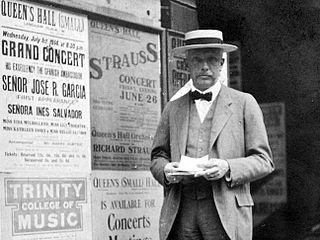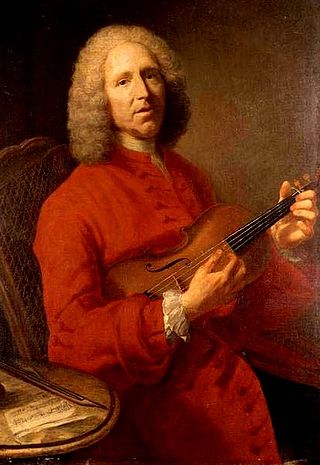Related Research Articles

Paul Abraham Dukas was a French composer, critic, scholar and teacher. A studious man of retiring personality, he was intensely self-critical, having abandoned and destroyed many of his compositions. His best-known work is the orchestral piece The Sorcerer's Apprentice, the fame of which has eclipsed that of his other surviving works. Among these are the opera Ariane et Barbe-bleue, his Symphony in C and Piano Sonata in E-flat minor, the Variations, Interlude and Finale on a Theme by Rameau, and a ballet, La Péri.

In Greek mythology, Ariadne was a Cretan princess and the daughter of King Minos of Crete. There are different variations of Ariadne's myth, but she is known for helping Theseus escape the Minotaur and being abandoned by him on the island of Naxos. There, Dionysus saw Ariadne sleeping, fell in love with her, and later married her. Many versions of the myth recount Dionysus throwing Ariadne's jeweled crown into the sky to create a constellation, the Corona Borealis.

Albert Charles Paul Marie Roussel was a French composer. He spent seven years as a midshipman, turned to music as an adult, and became one of the most prominent French composers of the interwar period. His early works were strongly influenced by the Impressionism of Debussy and Ravel, while he later turned toward neoclassicism.

The Paris Opera Ballet is a French ballet company that is an integral part of the Paris Opera. It is the oldest national ballet company, and many European and international ballet companies can trace their origins to it. It is still regarded as one of the four most prominent ballet companies in the world, together with the Bolshoi Ballet in Moscow, the Mariinsky Ballet in Saint Petersburg and the Royal Ballet in London.

Marin Marais was a French composer and viol player. He studied composition with Jean-Baptiste Lully, often conducting his operas, and with master of the bass viol Monsieur de Sainte-Colombe for six months. In 1676 he was hired as a musician to the royal court of Versailles and was successful there, being appointed in 1679 as ordinaire de la chambre du roy pour la viole, a title he kept until 1725.

Paul Antonin Vidal was a French composer, conductor and music teacher mainly active in Paris.

Ariadne auf Naxos, Op. 60, is a 1912 opera by Richard Strauss with a German libretto by Hugo von Hofmannsthal. The opera's unusual combination of elements of low commedia dell'arte with those of high opera seria points up one of the work's principal themes: the competition between high and low art for the public's attention.

The Orchestre de Paris is a French orchestra based in Paris. The orchestra currently performs most of its concerts at the Philharmonie de Paris.

Ariane et Barbe-bleue is an opera in three acts by Paul Dukas. The French libretto is adapted from the symbolist play of the same name by Maurice Maeterlinck, itself loosely based on the French literary tale La Barbe bleue by Charles Perrault.

Le bourgeois gentilhomme, Op. 60, is an orchestral suite compiled by Richard Strauss from music he wrote between 1911 and 1917.

Ariane is an opera in five acts by Jules Massenet to a French libretto by Catulle Mendès after Greek mythology. It was first performed at the Palais Garnier in Paris on 31 October 1906, with Lucienne Bréval in the title role.

Bacchus is an opera in four acts by Jules Massenet to a French libretto by Catulle Mendès after Greek mythology. It was first performed at the Palais Garnier in Paris on 5 May 1909.

Les surprises de l'Amour is an opéra-ballet in two entrées and a prologue by the French composer Jean-Philippe Rameau. It was first performed in Versailles on 27 November 1748. The opera is set to a libretto by Gentil-Bernard. According to the usage of the time, it was originally just billed as a ballet and was only later classified by scholars as an opéra-ballet, although its content might more precisely ascribe it to the ballet héroïque genre.

Ariane is a one-act opera by Bohuslav Martinů to a French libretto by the composer drawn from the second, third and fourth acts of the 1943 play Le Voyage de Thésée by Georges Neveux, who had supplied the text to the composer's earlier opera Julietta.

The Spider's Feast, Op. 17, is a 1912 "ballet-pantomime" with music by the French composer Albert Roussel (1869–1937) to a scenario by Gilbert de Voisins.
Alsatian conductor Charles Munch was one of the most widely recorded symphonic conductors of the twentieth century. Here is a partial list of his recordings.
The Belgian-born French conductor André Cluytens (1905–1967) was a prolific recording artist. His recording career ran from May 1943 to December 1965. Many of Cluytens recordings have since been re-issued.
Ariane et Bacchus is an opera by Marin Marais first performed at the Académie Royale de Musique on 8 March 1696. It takes the form of a tragédie en musique in five acts and a prologue. The libretto by Saint-Jean is based on Ovid's Metamorphoses and deals with the legend of Ariadne.
Kazuki Yamada is a Japanese conductor.

The orchestral Dance Suite from Keyboard Pieces by François Couperin, TrV 245 was composed by Richard Strauss in 1923 and consists of eight movements, each one based on a selection of pieces from François Couperin's Pièces de Clavecin written for the solo harpsichord over the period 1713 to 1730. It is also sometimes referred to as simply The Couperin Suite.
References
- ↑ "Roussel: "Bacchus et Ariane" Ballet Suite No. 2". UC Davis Arts. 2013-06-28. Retrieved 2024-01-16.
- ↑ "Bacchus et Ariane". InformaDanza (in Italian). 2015-12-12. Retrieved 2024-01-16.